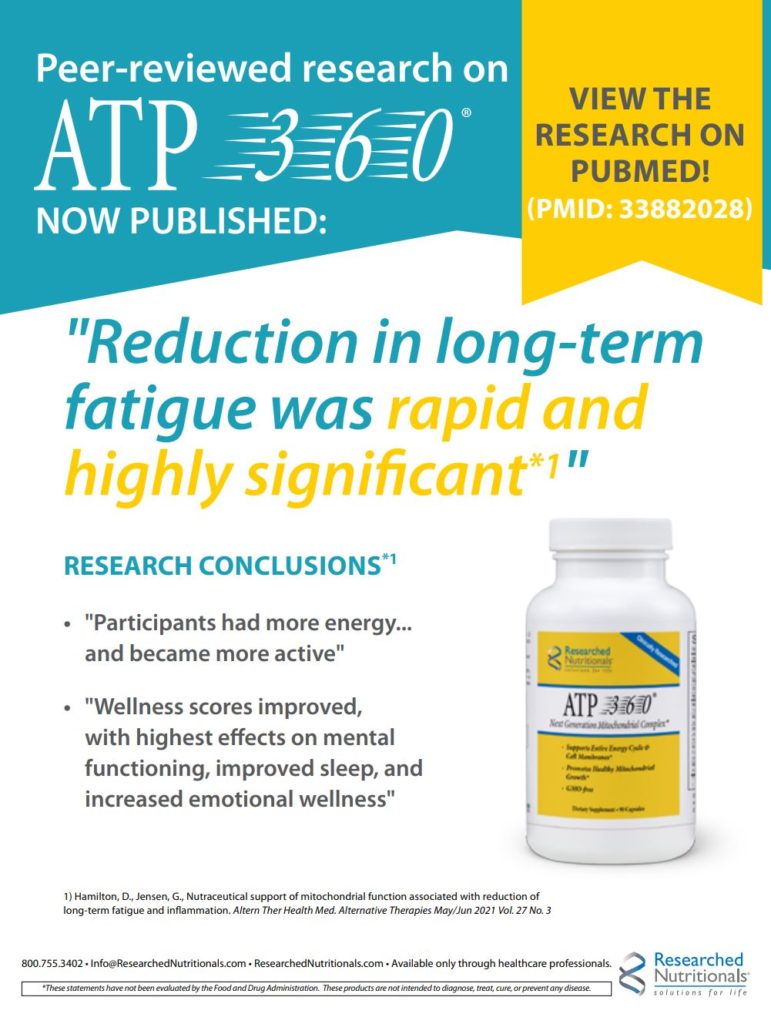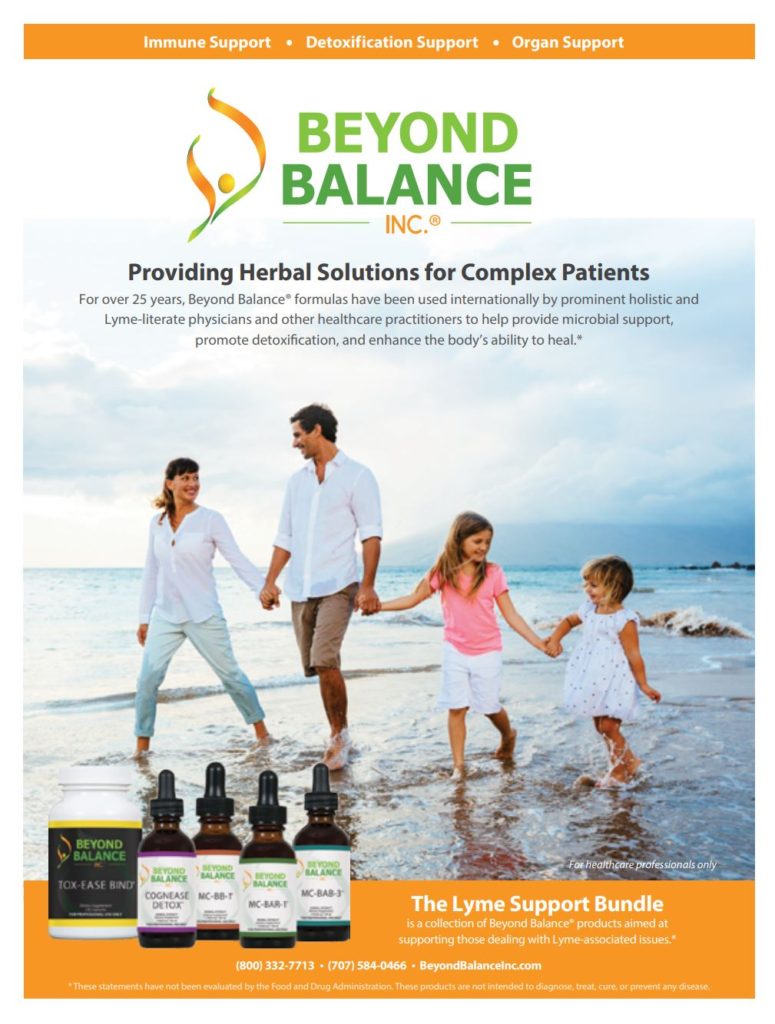Article continued…
Chronic Cases
Well, doesn’t this sound familiar: “Post-treatment Lyme disease syndrome” and “Post-COVID syndrome” (long haulers). If someone presents to you with a persisting multisystem illness, you may be faced with the clinical dilemma of deciding whether they have a chronic active TBD or the sequelae of a previous COVID-19 infection. And there is always the possibility that they may have both!
Symptoms common to both:
- Fatigue, headache, arthralgias, myalgias, cognitive deficits, sleep difficulties, palpitations, rapid pulse
- Sweats, chills, shortness of breath, cough, dizziness
- Conjunctivitis, GI upset, anxiety, depression
Note how I grouped these. The first set of symptoms are commonly associated with Borrelia infections, the second set with Babesiosis, and the third, Bartonella! In other words, just because someone has fatigue, shortness of breath with cough, plus GI complaints, don’t automatically conclude that COVID-19 is the cause.
Physical and lab findings can also be confusing. Here are some signs that can be common to both, but keep in mind that these may not be present in every patient:
- Fever
- False positive Anti-Nuclear Antibody
- False positive Rheumatoid Factor
- Anti-phospholipid antibodies
- Activated cytokines
- Abnormal brain scans (MRI, SPECT)
- Possible cardiac and pericardial involvement
So how does one differentiate late TBDs from late COVID-19? Again, some clues:
Chronic Lyme
- Prior history of Lyme or tick exposure
- Symptoms are migratory and cyclic—this is key
- Positive or suggestive tests for TBDs
Chronic COVID-19
- History of prior COVID-19
- Symptoms do not migrate or cycle
- End-organ damage—renal failure, hypoxia, intravascular clots. These are not generally seen as a result of TBDs.
However, a big issue is that the patient could have both! In other words, what if your patient who has had their run of TBDs and is doing well, then gets COVID-19, and now feels chronically unwell. It is possible that the physical stress on the body from this nasty virus could have allowed the TBDs to reactivate. Additionally, a component of the post-COVID syndrome can be active as well. It is our duty to be thorough in our assessment of this situation to best serve our patients.
Clinical Evaluation
Because immune dysfunction is common in this situation, a simple assessment is a reasonable starting point. Measure immunoglobulin levels (reflection of B-cell function) and a T-cell response assay (or skin anergy panel).
When testing for chronic tick-borne diseases, it is wise to use both indirect and direct tests. For example, if there is an immunoglobulin deficiency, then direct tests such as PCR and FISH may be more sensitive than serologies. By utilizing both techniques, the chance for a clinically useful result improves. When doing serologies, look for positive IgM reactivity and favor using an immunoblot for Borrelia. You may also add a T-cell response assay (ELISPOT) for a more complete picture. In addition to the direct tests (PCR and FISH), you may also add an antigen capture assay (urine and/or CSF) to maximize yield.
Next, test for the SARS CoV-2 virus and for the specific damage associated with COVID-19 that would be rare in a Lyme patient. Do a COVID-19 serology (immunoblot preferred) and an ELISPOT (T-cell response assay); consider PCR but be aware of the possibility of false positives. To check for the type of end-organ damage that makes you think of COVID-19, measure arterial oxygen level, check for scarring and fibrosis on a chest x-ray, check renal function, ferritin, etc. Also consider a pulmonary stress test because a good pulse-ox reading at rest will not help you find oxygen desaturation with activity, as is common with structural lung injuries.
Also strongly consider doing a cardiac MRI. Shockingly, at least 40% of symptomatic COVID-19 patients have varying levels of myocarditis show up on this type of scan. Cardiac MRIs can show active inflammation, edema, and scarring as well as give an accurate assessment of focal and global muscle function.
Summary
- A careful clinical history can help differentiate TBDs from COVID-19.
- Be aware of the high incidence of tick-borne co-infections! If you do not test fully, then you might miss an important pathogen.
- COVID-19 serology is important; immunoblotting is preferred to decrease false positives and false negatives; ELISPOT is now available and should be used.
- SARS CoV-2 PCR may not pick up a late infection.
- Test for conditions specific to either one to differentiate them.
- Strongly consider a cardiac MRI.
- Don’t exclude the possibility that your patient may have both!
What Happens When Your Lyme Patient Gets Exposed to COVID-19?
We know that chronic TBDs are associated with depressed immunity, so there is a valid concern for worse COVID-19 and reduced vaccine response in this population. However, there is a paradox—most patients with active Lyme seem to resist getting common colds! In fact, despite the evidence of immune impairment, there does NOT seem to be an increased susceptibility to other infections except the co-infections. So, will the same be true for resistance to COVID-19?
Well, there is good news. Many of the antibiotics used in Lyme are also antiviral—tetracyclines, macrolides and azoles. Most treatments for Babesia are antiviral—those that are based on quinine or artemesia, plus the macrolides that commonly accompany them. Azole antifungals are also antiviral, and many complementary treatments used in Lyme are antiviral and/or help the immune system. Are these antiviral qualities enough to work against SARS COV-2? Possibly. In fact, informal surveys of several Lyme-literate physicians all support the finding that COVID-19 is less common in their Lyme patients! And if they do become infected with COVID-19, their course tends to be milder.
However, most LLMDs will prescribe antivirals for these patients: hydroxychloroquine or ivermectin, plus zinc, vitamins C and D, herbal remedies, supportive measures and others.
Nevertheless, the usual COVID-19 risk factors still apply, so one must be on alert for these high-risk patients—advanced age, concurrent hypertension, diabetes, obesity, clinical immune deficiency (this is possible in very advanced Lyme), and those who may be on immune suppressive treatments.
COVID-19 in Lyme Suggestions
If your Lyme patient is on treatment and gets exposed to COVID-19, I suggest that you avoid inducing strong Herxheimers as these may weaken the host and increase the cytokine response. You may need to back off Lyme treatment a little.
Regarding supportive measures, as many of you know, I prefer to use supplements and supplement brands that are pharmaceutical grade and especially those that have been validated in published trials. This is not the time or place for unproven generics!
When supplementing, begin with broad mitochondrial support. This is vital for a healthy immune system. ATP 360 from Researched Nutritionals is what I use. Vitamins C and D and zinc are absolutely essential. Melatonin in high dose, magnesium and n-acetyl cysteine all may help to dampen the cytokine storm. Herbal anti-inflammatories such as quercetin, resveratrol, green tea, sulforaphane, etc. can be added if needed; what I have used for this is CytoQuel from Researched Nutritionals—sound formula, and its benefits have been documented in published studies. Consider artemesia as well as alpha lipoic acid for their multiple potential benefits. Glutathione may be added for detox and for antioxidant support (Tri-Fortify from Researched Nutritionals—again, published). In chronic Lyme patients especially, consider using transfer factors and medicinal mushrooms to take advantage of their ability to support NK cell function; Transfer Factor Multi-Immune from Researched Nutritionals has shown impressive results in trials. Finally, aspirin can be extremely useful due to its anti-platelet effects; it may also be antiviral.
Emphasize the benefits of a healthy diet, enforced rest and adequate sleep, and also realize that between the illnesses, lockdowns, isolation and fears, emotional support becomes vital –fears and anxieties can impair immunity and besides, who wants to be miserable? So be liberal in suggesting counseling, meditation, exercise, etc. and anything else that can help improve one’s outlook in these difficult times.
Article continues on next page…







